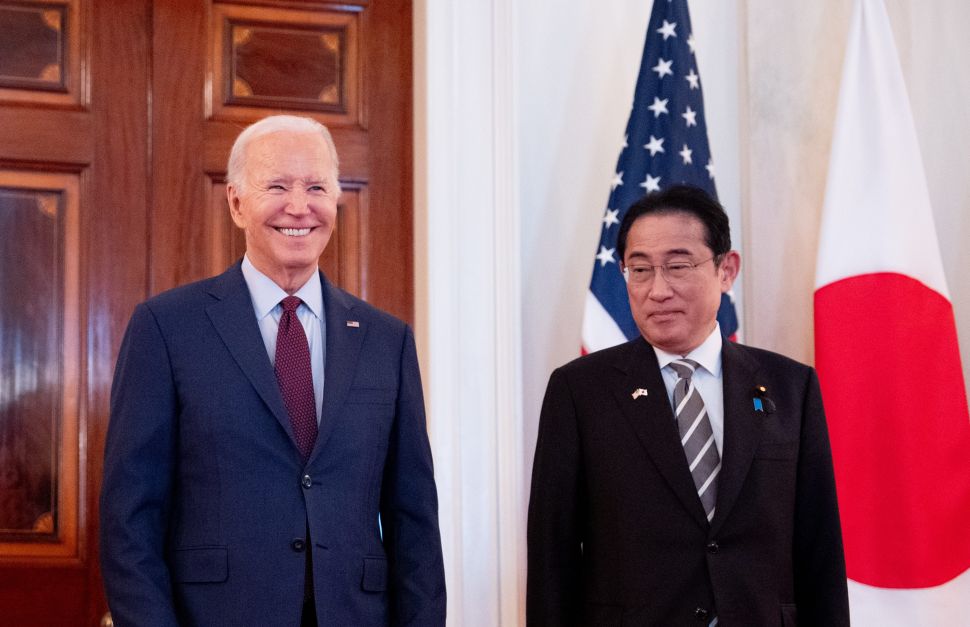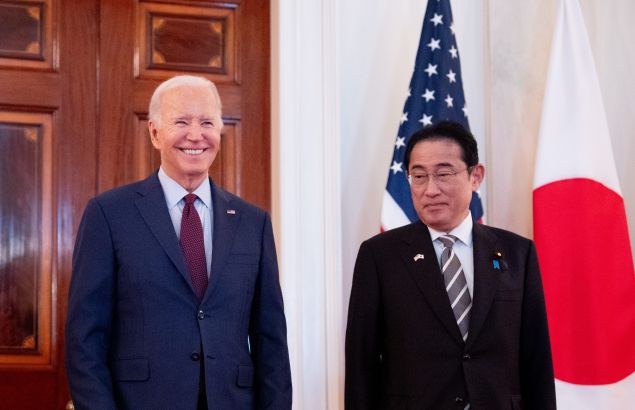
Yesterday (April 11), Japanese Prime Minister Fumio Kishida addressed a joint session of the U.S. Congress in an important expression of U.S.-Japan relations. During his remarks, Kishida reiterated his “new form of capitalism” policies as a means to grow the Japanese economy. “He thoroughly enjoyed an unusually supportive audience that frequently interrupted his speech with thunderous applause,” Gregory Nasif, who attended Kishida’s address and currently serves as press secretary for Congresswoman Alma S. Adams, told Observer.
Despite past economic hurdles, Japan now hopes to embrace a future of growth. And here are a few forces that could shape Japan’s future.
Artificial intelligence could help with the labor shortage
Labor shortage and aging population are both growing in Japan, but “A.I. increasing labor productivity can fill the gap,” Hisayku Idekoba, CEO of Recruit Holdings, a Tokyo-headquartered employment agency with global operations, said during a fireside chat yesterday at an event hosted by Japan Society in New York City.
Japan has the oldest population of any country. One out of 10 Japanese citizens is over the age 80, according to United Nations data. Having the fastest shrinking working-age population of any developed economy and one of the lowest birth rates globally, Japan struggles to have the workers needed to grow its economy. It is estimated that labor supply in Japan will fall short by 11 million workers by 2024.
Idekoba said that Japan should be “all in on A.I.” to address this crisis. Japanese companies have long been on the frontier of advanced robotics and automation to address the labor shortage, and Idekoba is confident that A.I. can further such initiatives.
Japan finally reverses negative interest rates
Last month, the Japanese Central Bank voted 7-2 to increase short-term rates to 0-0.1%, becoming the latest country to end negative interest rates. It was Japan’s first rate hike in 17 years. The European Central Bank was the first country to implement negative rates in 2014, which ended in 2022. As Japan struggled with growth and deflationary pressures, it introduced negative rates in 2016 but saw little success in stimulating its economy.
The impetus for Japan’s reversal on negative rates was prompted by a 3.7 percent increase in wage growth—driven by the growing labor shortage—and a 2.8 percent inflation print. Although it may appear low in comparison with the high inflation in the U.S., such a figure is steep for Japan, which experienced near and below-zero inflation in past years.
PM Kishida called it a “once-in-a-lifetime opportunity to exit from deflation” in a recent news conference. However, the Japanese government remains cautious while economists are unconvinced that this could be a new page for the country. Mikihiro Matsuoka, chief economist at SBI Securities, said Japan’s economy is “not yet” normal, in a Financial Times report.
“The U.S. is like Japan 20 years ago.”
“The situation of the U.S. is like Japan 20 years ago,” Idekoba remarked during the fireside chat, pointing to a slide of how the U.S. aging population grows while the working-age demographic declines. Idekoba points out that the U.S. has not grown its work force in the last two years, but only supplemented it with temporary foreign workers.
The similarities don’t end there: Japan first experimented with quantitative easing and loose monetary policies in 2001, which were widely received as controversial. This, alongside continuous low-rate environments and large fiscal spending, showcases a country that once promised to become a global economic hegemon turning to dramatic fiscal and monetary policy to fuel growth. Though controversial two decades ago, such policies are now commonplace in the U.S.
Economists have already been asking if the U.S. is turning into Japan; there are similarities, though also dramatic differences.
